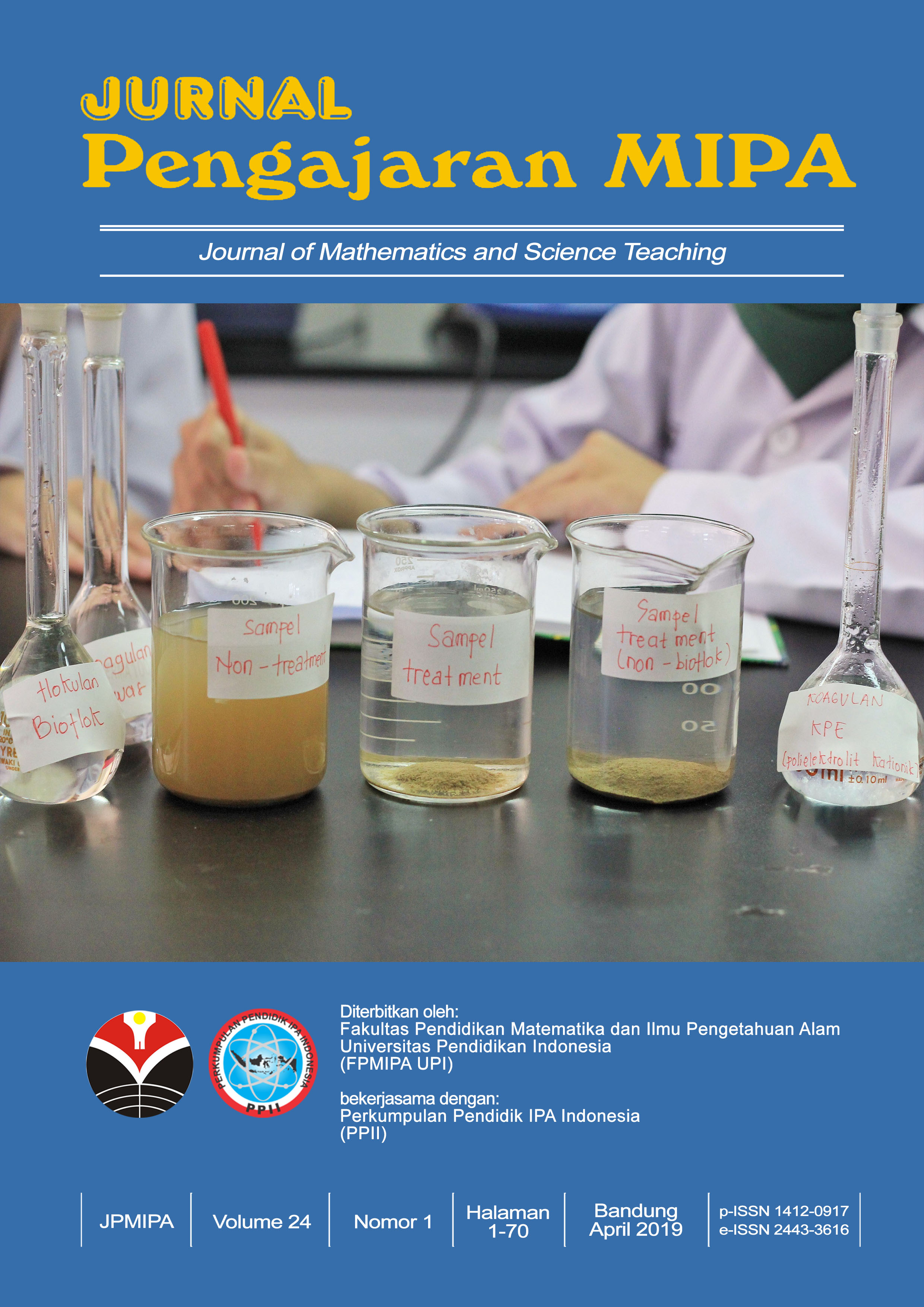ANALISIS REPRESENTASI MATEMATIK SISWA SEKOLAH DASAR DALAM PENYELESAIAN MASALAH MATEMATIKA KONTEKSTUAL
Abstract
Keywords
Full Text:
PDFReferences
Biellstein, Libeskind & Lott. (1993). A Problem Solving Approach to Mathemacs for Elementary School Teachers (fifth edition). USA: Addison Wesley.
Goldin, G. A, (2002). Perspective on Representation in Mathematical Learning and Problem Solving. Dalam English (ed.) Handbook of International Research in Mathematics Education(Second Ed.). 176 – 201.
Harries, T. & Sutherland, R. (Tanpa Tahun).The representation of mathematical concepts in primary mathematics textbooks: a focus on multiplication.England: QCA funded projects.
Hudojo, H. (2003). Pengembangan Kurikulum dan Pembelajaran Matematika (Common Textbook). Malang: Uiversitas Negeri Malang.
Hwang, W.-Y., Chen, N.-S., Dung, J.-J., & Yang, Y.-L. (2007). Multiple Representation Skills and Creativity Effects on Mathematical Problem Solving using a Multimedia Whiteboard System. Educational Technology & Society, 10 (2), 191-212.
National Council of Teacher Mathematics. (1989). Curriculum and Evaluation Standards for School Mathematics. USA: NCTM.
National Council of Teacher Mathematics. (2000). Principles and Standadrs for School. USA: NCTM.
Ruseffendi, E.T. (1991). Pengantar membantu Guru Mengembangkan Kompetensinya dalam Pengajaran Matematika untuk Meningkatkan CBSA. Bandung : Tarsito.
Schoenfeld, Alan H. (1992). Learning to Think Mathematically: Problem Solving, Metacognition, and Sense Making in Mathematics. Hanbook of Research on Mathematics Teaching and Learning. Editor: Doeglas A. Grouws.
Silver, E. A., (1985). Research on Teaching Mathematical Problem Solving: Some Underrepresented Themes and Needed Directions. Dalam Edward A. Silver (editor) Teaching and Learning Mathematical Problem Solving: Multiple Research. New Jersey: Lawrence Erlbaum Associates Publisher.
Tim Olimpiade Sains Nasional (2007). SoalSoal Olimpaide Matematika SD (Soft). Jakarta: Depdiknas.
DOI: https://doi.org/10.18269/jpmipa.v16i1.36003
Refbacks
- There are currently no refbacks.
Copyright (c) 2021 Jurnal Pengajaran MIPA

This work is licensed under a Creative Commons Attribution-ShareAlike 4.0 International License.
JPMIPA http://ejournal.upi.edu/index.php/jpmipa/index is licensed under a Creative Commons Attribution-ShareAlike 4.0 International License
Jurnal Pengajaran Matematika dan Ilmu Pengetahuan Alam (JPMIPA) or Journal of Mathematics and Science Teaching
All rights reserverd. pISSN 1412-0917 eISSN 2443-3616
Copyright © Faculty of Mathematics and Science Education (FPMIPA) Universitas Pendidikan Indonesia (UPI)
View JPMIPA Stats









